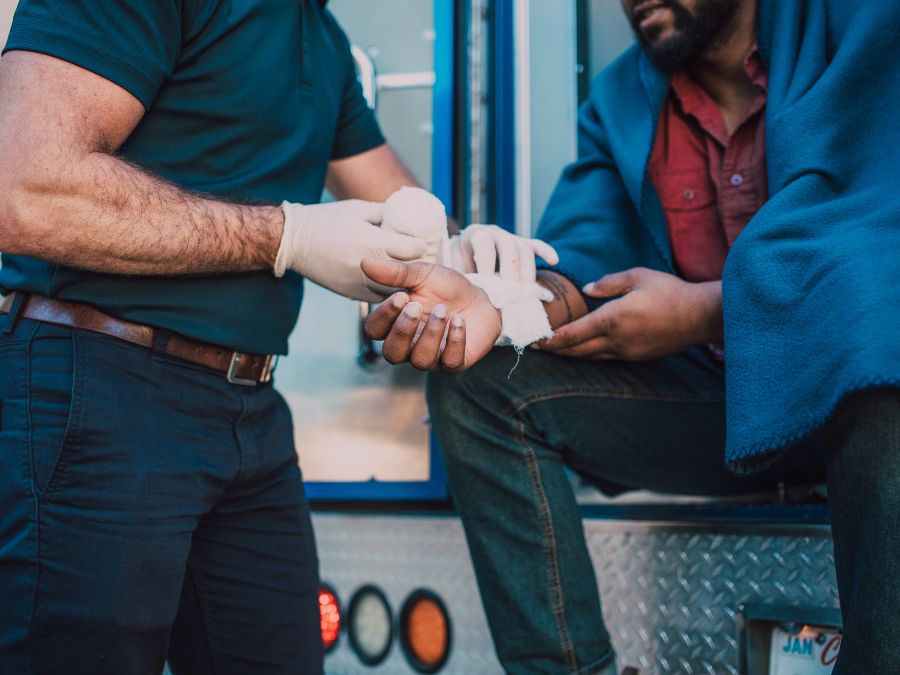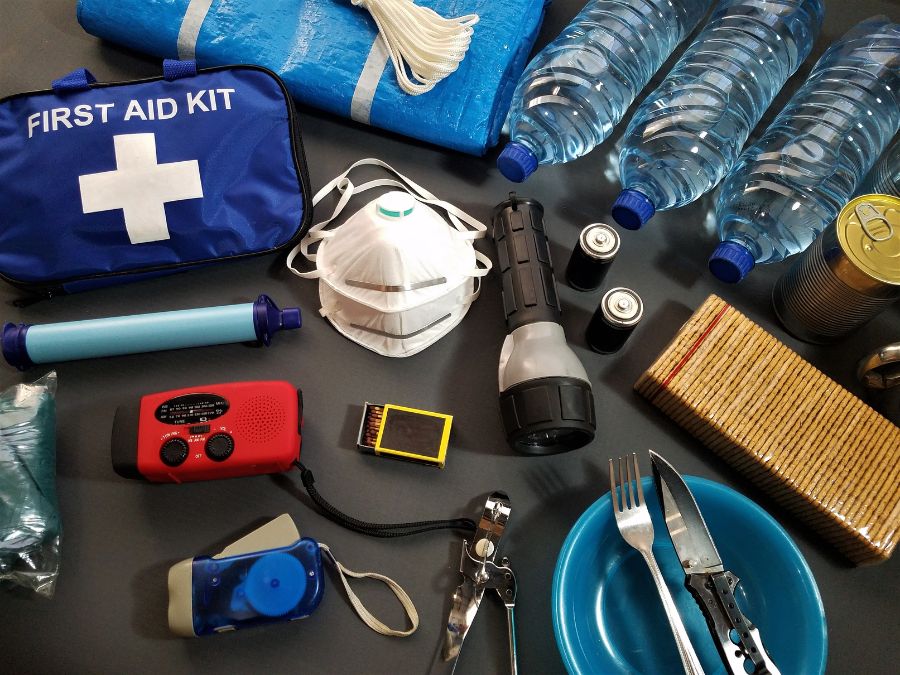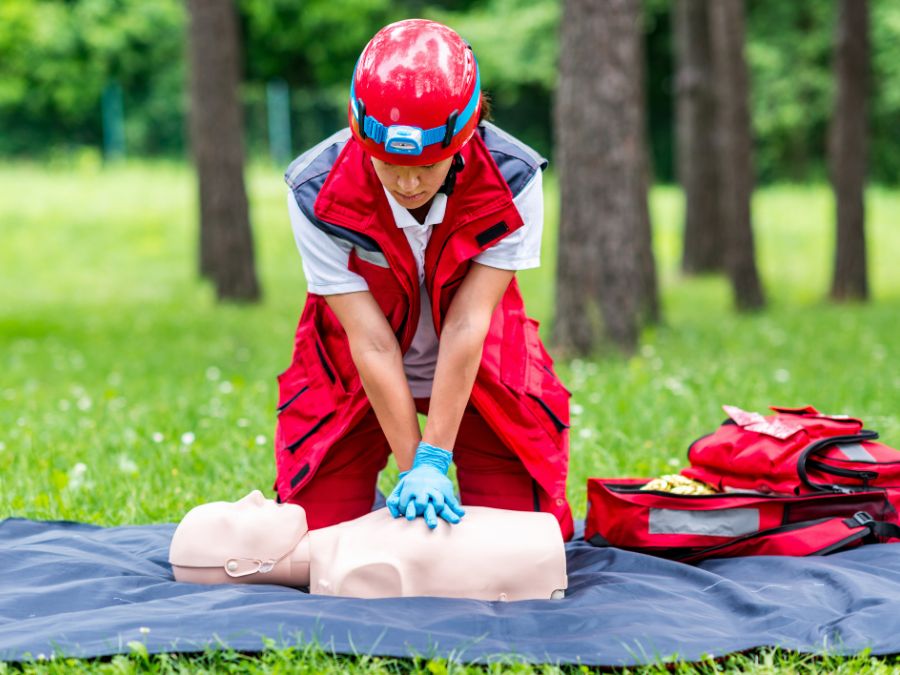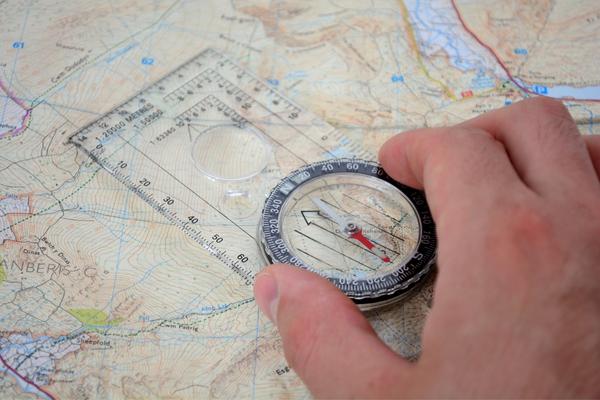Be Ready for Anything: A Comprehensive Guide to Basic First Aid Skills
Introduction
As much as we hope to avoid them, emergencies happen. From a minor scrape or cut to a more serious accident, it always pays off to be prepared for the unexpected. That’s why knowing basic first aid skills is so important.
Whether you’re at home, work or out in public, having the knowledge and confidence to act quickly in an emergency can make all the difference. Having first aid knowledge can help prevent situations from becoming worse and potentially save someone’s life.
It can also give you peace of mind knowing that you are prepared for any situation that may arise. According to the American Red Cross, knowing first aid can greatly reduce recovery time and even prevent further injury or illness from occurring.
So why not take some time to learn basic first aid skills? You never know when you might need them, and they could make all the difference in an emergency situation.

General First Aid Skills
How to Assess an Emergency Situation
The first thing that you need to learn in order to provide first aid is how to assess an emergency situation. You need to be able to quickly and accurately determine the severity of an injury, so that you can provide appropriate care. The best way to do this is by using the ABC approach.
This stands for airway, breathing, and circulation. First, check the person’s airway by tilting their head back slightly and checking for any obstructions.
Next, check if they are breathing properly by looking for chest movements or listening for sounds of breathing. Check their pulse or look for other signs of circulation such as skin color or temperature.
Basic CPR Techniques
CPR stands for cardiopulmonary resuscitation and it is a life-saving technique used when someone’s heart has stopped beating. To perform CPR correctly, you need to follow these basic steps:
– Place your hands on the person’s chest with your fingers interlocked. – Press down hard and fast on their chest about 2 inches deep.
– Repeat this process at a rate of 100 compressions per minute. – After completing 30 compressions, open their airway and give them two breaths.
– Continue alternating between compressions and breaths until help arrives. It’s important that you take a CPR class before attempting it on someone in real life so that you understand all the nuances required for effective resuscitation.
How to Control Bleeding
Bleeding can be scary but it can usually be controlled with basic first aid skills. The first thing you should do is apply pressure directly on the wound using a clean cloth or gauze pad until bleeding stops. Once you have controlled bleeding with direct pressure then secure gauze pad with a bandage.
If the bleeding is severe, elevate the affected area above heart level while applying pressure to the wound. Do not remove any objects that are stuck in the wound as it may cause more damage or bleeding.
Treating Burns and Scalds
Burns and scalds can be caused by heat or chemicals and can range from minor to severe. If the burn is minor, run cool water over it for 10 minutes, then cover it with a sterile gauze pad.
For more serious burns, call 911 immediately. For chemical burns, immediately wash away any residue with copious amounts of cool water for at least 20 minutes before covering with a sterile gauze pad.

Specific First Aid Skills
How to treat a sprain or strain
A sprain or strain is a common injury that can happen during physical activity. A sprain occurs when ligaments are stretched or torn, while a strain happens when muscles or tendons are overextended. Both injuries can cause pain, swelling and limited movement.
If you suspect someone has sprained or strained an ankle, wrist or other body part, it’s important to act quickly. The first step is to stop the activity that caused the injury and help the person rest comfortably.
Ice should be applied immediately to reduce swelling (20 minutes on, 20 minutes off) and elevated above heart level if possible. Compression with an elastic bandage can also help reduce swelling and support the injured area.
Dealing with insect bites and stings
Insect bites and stings are generally harmless but can be painful and uncomfortable. Some people may experience an allergic reaction that requires prompt medical attention. Symptoms of an allergic reaction include difficulty breathing, hives, rapid heartbeat, dizziness or confusion.
To treat a minor bite or sting from an insect such as a bee or mosquito, wash the affected area with soap and water before applying ice for up to 20 minutes at a time to alleviate discomfort. Over-the-counter antihistamines can be taken as directed for itching relief.
Recognizing signs of shock
Shock occurs when there isn’t enough blood circulating in the body due to severe injury or illness. Signs of shock include pale skin that feels cool to the touch, rapid pulse rate, shallow breathing, confusion or loss of consciousness.
If you suspect someone is in shock it’s important to call emergency services immediately while ensuring their safety by laying them down flat on their back with their legs elevated above heart level if possible. Avoid giving any food or drink and keep them warm with blankets.
Handling a nosebleed
Nosebleeds can be scary but are usually not serious. They can be caused by a number of things including injury, high blood pressure, allergies or dry air.
Most nosebleeds stop on their own within 10-20 minutes. To treat a nosebleed, have the person sit down and lean forward slightly with their head tilted forward to prevent blood from flowing into the throat.
Pinch the nostrils together firmly for at least 10 minutes while breathing through the mouth. If bleeding persists, seek medical attention.

Emergency Situations
What to do in case of a heart attack or stroke
Heart attacks and strokes can be life-threatening emergencies that require immediate attention. If you suspect someone is having a heart attack or stroke, you need to act quickly. Call 911 immediately and then take the following steps.
For a heart attack, have the person rest comfortably and loosen any tight clothing. If they have aspirin on hand, they should chew one unless they are allergic to it.
If the person becomes unresponsive, begin CPR. For a stroke, look for signs of facial drooping, arm weakness, and slurred speech.
Have the person lay down with their head slightly elevated to help with blood flow to the brain. Do not give them anything to eat or drink as they may choke on it.
Dealing with choking victims
Choking is another emergency situation that requires quick action. A choking victim may be unable to cough or speak and may make gasping noises while clutching their throat.
Follow these steps if you encounter a choking victim: Firstly try asking them if they can speak or cough as this indicates that air is still flowing.
If not able to cough then Stand behind the person and wrap your arms around their waist. Make sure your fist is placed below their ribs but above belly button
Thrust inward and upward five times with your fists until the object comes out. If the choking victim becomes unconscious at any point during this process, begin CPR immediately.
Responding to seizures
Seizures can be frightening for both the person experiencing them and those around them. During a seizure, it’s important to keep calm and protect the individual from harm by moving objects away from them if possible if not gently cushion head between soft objects like pillow etc.. Here are some other things you should do:
Time the seizure to determine its duration. Ensure nothing enters their mouth or throat
As consciousness returns, provide reassurance and help them sit up slowly. If the seizure lasts longer than five minutes or if the person has multiple seizures in a row without regaining consciousness, seek medical attention immediately.

Additional Tips and Tricks
Creating a First Aid Kit for Your Home or Car
Having a well-stocked first aid kit can mean the difference between life and death in an emergency. You never know when an accident might happen, so it’s important to be prepared. A basic first aid kit should include antiseptic wipes, band-aids, gauze pads, medical tape, scissors, tweezers, and gloves.
Additional items you might consider adding include cold packs, pain relief medication such as acetaminophen or ibuprofen, and an emergency blanket. Keep your first aid kit in a location that is easily accessible in case of an emergency.
If you’re creating one for your car, make sure it’s securely stored so it doesn’t become a projectile during an accident. Check your kit regularly to ensure that all items are up-to-date and replenish any missing supplies promptly.
Knowing When to Call for Professional Help
While basic first aid skills can be extremely helpful in many situations, there are times when professional medical attention is necessary. In general, you’ll want to call for professional help if someone is experiencing severe bleeding that cannot be controlled with direct pressure or if they have sustained a head injury that causes them to lose consciousness. Other signs that indicate the need for professional medical attention include difficulty breathing or chest pain; severe burns; broken bones; signs of stroke such as slurred speech or weakness on one side of the body; and seizures lasting more than five minutes.
If you’re ever unsure whether professional help is needed or not, err on the side of caution and call 911 immediately. It’s always better to be safe than sorry when it comes to someone’s health!
Conclusion
Every day, people experience emergencies which require immediate medical attention. Whether it’s a little cut or a heart attack, knowing what to do in those crucial first few minutes can mean the difference between life and death.
It is essential for everyone to know the basic first aid skills. It is important to be prepared for emergencies by learning these basic first aid skills.
The knowledge of how to assess an emergency situation, control bleeding, perform CPR, treat burns and scalds and other such skills could come in handy at any time or place. It is also recommended that you create your own first aid kit for your home or vehicle with essential items like bandages, antiseptic wipes and pain medication.
In addition to being prepared yourself, you should also encourage others around you to learn basic first aid skills as well. This could include family members, friends or even colleagues at work who can help in case of an emergency.
By working together and sharing knowledge about basic first aid techniques, we can make our communities safer places to live. And finally, remember that emergencies can happen anytime anywhere irrespective of age, gender or social status.
By learning these basic first aid skills you are taking a step towards ensuring your own safety and that of others around you. So go ahead and start today – learn the basics of first aid – because being prepared truly is the best way to stay safe!







